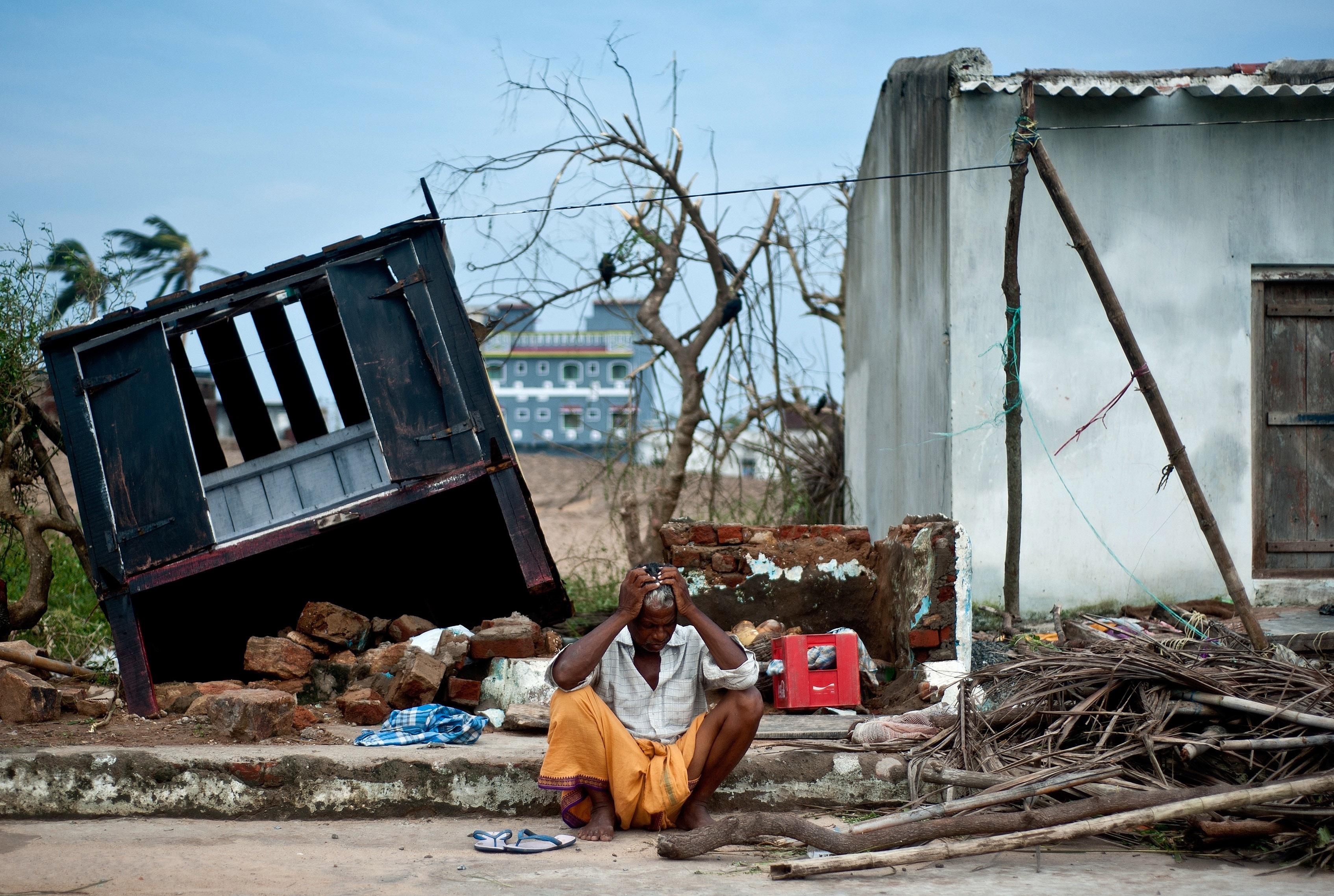UPDATE: The evacuation of nearly 1 million people seems to have helped India avoid the huge fatality count that was widely expected from a massive cyclone that hit the country Saturday. Many had feared the worst, with memories of the 10,000 killed in the eastern state of Odisha by the last big cyclone to strike the country in 1999. But so far, Indian officials say they know of only 17 fatalities directly related to Cyclone Phailin, although the death toll is expected to climb as rescue workers get to some of the worst-hit areas, notes the Associated Press.
“Despite the destruction, there’s a feeling of relief that the loss of life has been lower than had been feared,” writes the BBC’s Sanjoy Majumder. “Many people said the government’s urgency in getting people into shelters ahead of the storm had made the difference.”
Aid workers were quick to warn Sunday though that even if the death toll was lower than had been initially feared, the cyclone caused devastating damage and more than one million people would need assistance because their livelihood and homes were likely destroyed, notes Reuters. Odisha state may lose up to 1 million tons of rice output due to the cyclone, reports Bloomberg.
Meanwhile, in central India, at least 115 pilgrims, including 30 children, were killed in a stampede at a Hindu festival on Sunday. It seems many of the pilgrims were crushed to death when a stampede broke out on a narrow bridge. Others were killed when they tried to jump from the bridge, reports the Times of India. The tragedy seems to be a repeat of 2006, when 50 pilgrims were killed at the same site.
Deadly stampedes are all too common during India’s religious festivals. “Most of the incidents are blamed on poor crowd-control techniques and planning by the authorities,” notes the BBC.
Original post, Oct. 12 at 5:21 p.m.: A massive cyclone hit India’s eastern coastline Saturday night forcing as many as 550,000 people into shelters inland in hopes of avoiding what officials had been warning is a very dangerous storm that could affect as many as 12 million people. India’s National Disaster Management Authority described it as one of the largest evacuations the country has ever seen, reports Reuters. Cyclone Phailin made landfall with winds of up to 130mph. Even though it began to weaken as soon as it hit land, it is still expected to remain a “very severe cyclonic storm” until early Sunday. It is the strongest storm to hit India since 1999, when 10,000 people were killed.
Indian media have reported five deaths linked to the storm so far, although officials made clear a more accurate casualty count will not be available until Sunday morning. Even though official estimates of the storm’s power declined somewhat it still remained “exceedingly strong and dangerous,” notes the Associated Press. Making matters worse, the eye of the storm collapsed before hitting land so a larger area than initially expected will be affected by the strong winds.
The BBC’s Andrew North reports from Behrampur and describes “a scene of apocalyptic devastation” in a city that went dark. The Hindu describes the city as reminiscent of a war zone. Everything shut down and the streets were empty Saturday evening as people hunkered down for the storm. Officials had said no one would be allowed to remain in mud and thatched houses along the coast of Orissa and Andhra Pradesh states but some people refused to leave, afraid of losing belongings. “Many people refused to move, had to be convinced, and at times the police had to forcefully move them to safe places,” Home Minister Sushilkumar Shinde said.
